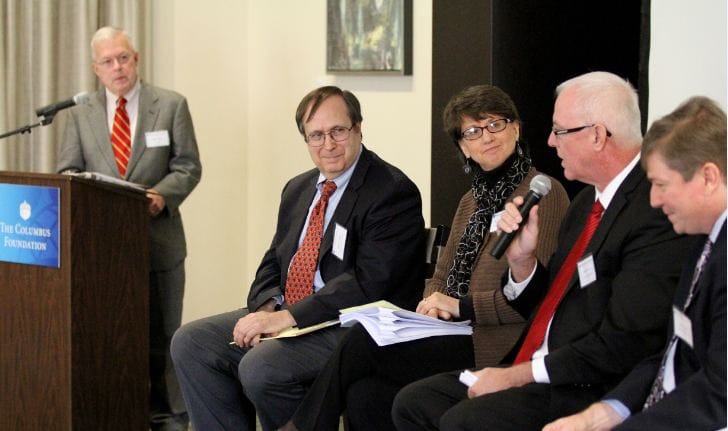One in three Columbus students change schools each year. So, it’s little surprise that a group of nearly 100 of Columbus’ education and community leaders gathered last week to hear about and discuss the groundbreaking research findings from Fordham and Community Research Partners’ (CRP) just-released Ohio Student Mobility Project.
In attendance were senior staff members from Columbus City Schools, the Ohio Department of Education, the Ohio Department of Jobs and Family Services, The Ohio State University, Columbus’ largest charitable foundations, members of the press corps, and education policy and youth program organizations. The Columbus Foundation hosted the event.
Roberta Garber of CRP opened the event with an overview of the research findings for the Columbus metropolitan area. The findings were striking: There’s a lot of student movement—perhaps more than generally appreciated—occurring within school districts, between districts, and between charter schools and traditional districts.
After the presentation of the data, Mark Real of KidsOhio.org moderated a panel discussion that talked about the implications of the research findings. The panel included Matt Cohen of the Department of Education, Nancy Van Meter of the American Federation of Teachers, Steve Dackin of Reynoldsburg School District, and Terry Ryan of the Thomas B. Fordham Institute.

Photo courtesy of The Columbus Foundation. From left to right: Moderator Mark Real of KidsOhio.org; Panelists Matt Cohen of the Ohio Department of Education, Nancy Van Meter of the American Federation of Teachers, Steve Dackin of Reynoldsburg School District, and Terry Ryan of the Thomas B. Fordham Institute.
The panelists made several key points:
- The need for additional research on mobility that can disentangle the causes and consequences of student moves.
- The need to work collaboratively across traditional boundaries—whether geographic or institutional—to mitigate negative effect of mobility on students.
- The need to consider the impact of mobility on educational systems, from teacher evaluations to accountability to school funding.
- The need to ask what makes some schools “sticky”—that is, keep more of their kids—and why some schools have more churn in their student population.
Based on the discussion between the panelists and the ensuing Q&A with all attendees, at least one consensus emerged: The student mobility research opens just about as many questions as it answers. And those in attendance seemed willing to roll up their sleeves, dig more into the issue, search for answers, and ultimately come up with solutions on how to manage student mobility more effectively--at a state policy, local district, classroom, and even family level.
